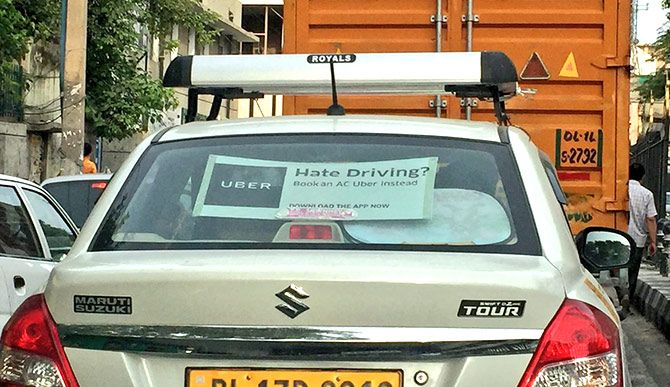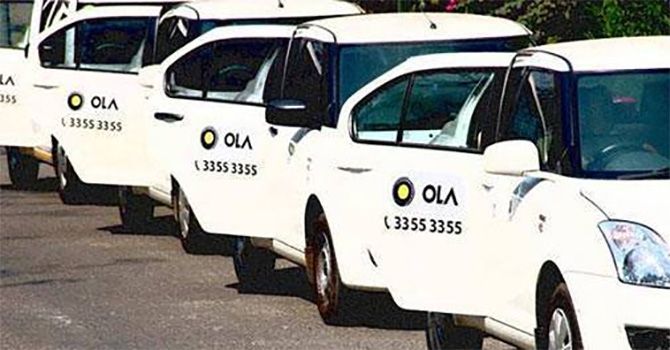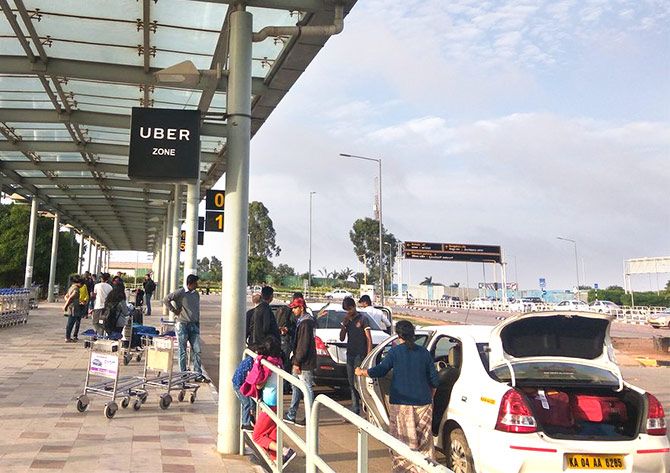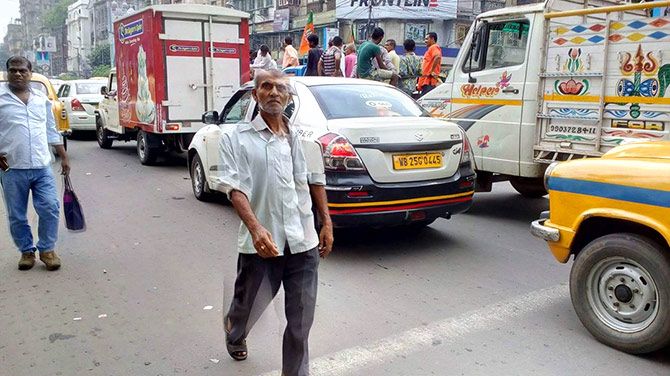Car-makers see a dip in demand from their biggest buyers, Ola and Uber. Demand from aggregators weakened for a number of reasons after a strong growth last year.

Hyundai, the country’s second-largest car maker, had plans to double sales to cab aggregators such as Ola and Uber in calendar year 2017.
But external challenges have resulted in a near-flat performance during the first half of the calendar year. Its sales to cab aggregators had grown sharply to 29,818 vehicles in 2016 from just 7,917 units in the previous year.
A combination of regulatory and financial issues has halted growth and this trend could last for some time.
In the first half of calendar year 2017, the Korean car maker sold 12,318 vehicles to cab aggregators, a tad more than the 12,072 units sold last year. Hyundai and other key car makers -- Maruti Suzuki, Toyota and Honda -- who had benefitted from this surge in the last couple of years, are seeing a slowdown in demand.
“Aggregators are reducing their cash burn and their business is not keeping up with their expansion plans,” said N Raja, director and senior vice-president, sales and marketing, Toyota. 
Market research firm RedSeer suggested in a report last month that the number of cabs affiliated to Uber and Ola had dropped by 25 per cent in the first quarter of 2017. The drop is over the estimated 500,000 cabs affiliated to ride hailing service providers in the quarter ended December 2016.
Reduction in driver incentive is seen as a key reason for this decline as companies get serious on cutting losses. “This trend was precipitated largely by continuously dropping incentives and driver incomes. Drivers who left the online platforms either shifted to other (offline) driving jobs or changed professions entirely,” the report said.

The pace of addition of new vehicles has taken a beating owing to the reduced incentives. “We saw a definite slowdown in demand from cab aggregators in the last couple of months. There is a challenge and the segment is seeing an impact,” said Rakesh Srivastava, director, sales and marketing, Hyundai.
A fresh blow has come under the goods and services tax. Cab aggregators as well as their drivers have to pay twice the amount of tax on leasing under the GST regime, making the whole business model unsustainable, companies claimed. According to experts, lease rentals could rise from 14.5 per cent at present to anywhere between 29 per cent and 43 per cent.
A spokesperson at Honda said the company witnessed a decline in demand in the first quarter of FY17. “The cab aggregator segment is currently facing many challenges. If the issues can be addressed, sales will pick up again,” the spokesperson said.
Maruti Suzuki, which is estimated to get about six per cent of its sales from this segment, did not respond to queries. Chairman R C Bhargava had said last year that cab aggregators will be the company’s “biggest” customers. The car maker is estimated to sell 6,000 to 7,000 vehicles per month to the cab aggregators.
Other than the reduced incentives and the impact from GST, a May notification from the road transport ministry, which mandated the use of speed governors in all taxis to restrict speed to 80 km per hour, could have also impacted demand.









